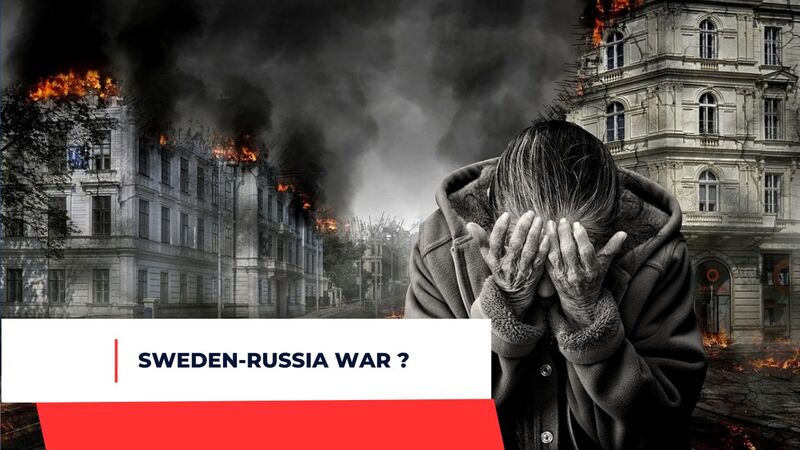Swedish civil defense minister and military commander-in-chief issued a warning that there could be war in Sweden, prompting alarmist accusations of overreacting.
As Sweden nears NATO membership and Ukraine deteriorates, this episode serves as a timely reminder that European states must strike a balance between increasing military spending and preparedness and meeting citizens’ demands for jobs, growth and welfare.
The Situation in Ukraine
Prior to Russia’s invasion of Ukraine, Kyiv increasingly strengthened its ties to NATO, becoming one of six enhanced opportunity partners – which offers special privileges to close nonmember allies – of this organization. Furthermore, Ukrainian military held annual NATO drills and maintained their commitment towards eventual full membership within this bloc.
Putin may have underestimated how effectively this war would influence debates in Finland and Sweden over their membership of NATO, prompting both nations to reconsider joining. Both are currently deliberating whether or not to acquire lethal weapons such as JASSM air-to-surface cruise missiles from NATO as well as Gabriel V low-altitude anti-ship missiles produced in Israel from within their respective militaries.
As the conflict drags on, it is clear that Putin remains focused on his original objectives – though he’s keenly aware that Western capacities and willingness are limited, particularly since this war has already diverted considerable resources away from more pressing matters – like Iran’s ongoing nuclear crisis.
The Situation in Crimea
Crimea is strategically vital to Russia because it offers them access to warm waters in winter when their other ports freeze over, as well as offering them access to the Black Sea – creating an ideal platform for naval forces.
Northern and central regions of the peninsula feature steppe terrain used for intensive agricultural cultivation of wheat, corn (maize), potatoes, sunflowers, tobacco as well as tobacco used as an oil crop in its manufacturing processes. Tobacco farming also is popular. To the south lies mountainous terrain filled with vineyards.
Russian propaganda propagates the illusion that Crimea has always been part of Russia and that its return was simply the result of genuine self-determination by a majority ethnic Russian population, voting to join. Unchallenged, this myth undermines Ukraine’s territorial integrity and encourages other expansionist powers; therefore it is imperative for the US and Europe to support Kyiv, enforce Crimea-related sanctions, and refuse recognition of Moscow’s annexation of Crimea as this would send a strong deterrent signal that Russia won’t get away with its land grabs.

The Situation in Baltic Sea
The Baltic Sea, with its vital maritime shipping routes and Russia’s exclave Kaliningrad on either side, remains at the core of Russia’s strategic intentions. This region serves as a testing ground for destabilization tactics used by Moscow while also testing NATO allies’ ability to develop comprehensive force mixtures capable of deterring and responding effectively against hybrid threats, aggression and naval blockades.
Western navies must return their focus back onto the Baltic after two and a half decades of post-Cold War reorientation. Estonian, Latvian and Lithuanian navies – without air forces – should make coastal defense (including amphibious raids ) their highest priority and modernize their forces accordingly.
Denmark and Germany, each boasting sizeable navys, should prioritize upgrading their forces for use in the Baltic and contingencies along NATO’s northern flank. They should enhance MARCOM capabilities as well as build up fleets of passive sonobuoys and static hydrophone networks to thwart Russian submarine activity.
The Situation in the Arctic
The Arctic has increasingly become a venue for global competition and potential conflicts among great powers, as well as being home to significant economic and ecological interests that increasingly link with global security concerns.
Armed conflict in the Arctic would undermine cooperation, undermine Arctic Council governance arrangements and endanger fragile ecosystems in the region. Furthermore, such conflict could impede search-and-rescue missions, environmental protection efforts or energy exports.
War in the Arctic would only heighten Russia’s sense of vulnerability and lower its threshold for provocations in the region, increasing risks of miscalculation or escalation by the Kremlin. Russia views the Arctic as essential to maintaining nuclear deterrence, power projection, and nuclear deterrence, while at the same time seeing threats posed by NATO’s military buildup in their backyard – hence why Sweden and Finland’s applications for NATO membership are so significant.
To know more about recent developments, visit our Alts news website. Thankyou!
- Friday Intraday Trading Sees Nvidia’s stock Market Cap Momentarily Cross $2 Trillion
- Trump’s January 6 Civil Cases Proceed While Criminal Case Is Halted
- Trump Delivers Speech at the Columbia Black Conservative Federation Gala
- Trump Declares Strong Support for IVF Following Alabama Supreme Court Decision
- Schumer in Ukraine Declares US Backing During House Aid Standoff






